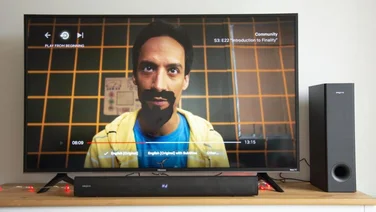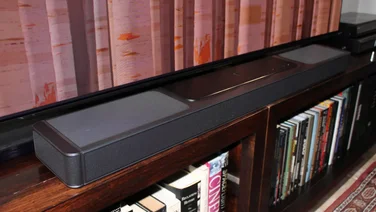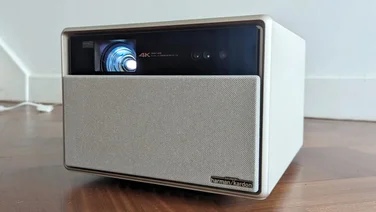To help us provide you with free impartial advice, we may earn a commission if you buy through links on our site. Learn more
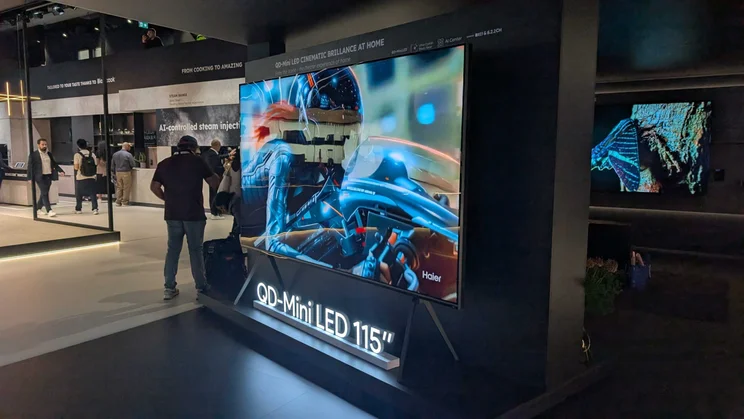
Alongside air fryers, TVs were about the last thing I expected to see at Haier’s impressive IFA 2025 booth. But it feels like a no-brainer to me: the likes of Samsung and LG already straddle the home appliance and AV sectors, and Haier definitely has a similar pedigree (although the brand isn’t yet as ubiquitous in the UK).
So while yes, the new AI-enhanced fridges, washing machines, tumble dryers and ovens are all gorgeous to behold and packed to the rafters with AI-enhanced features, I think the selection of high-end Haier TVs coming to market soon is almost more intriguing – after all, competitive categories like this one don’t often get new players.
What do we know so far?
As with Haier’s recently unveiled air fryers, details are light on the ground, but I did catch a glimpse of the full range at IFA. There were five models on show: 75in, 85in and 100in mini LED sets, and an 85in and 115in QD-mini LED.
The 85in QD-mini LED has solid gaming credentials, with a whopping 240Hz refresh rate and a dedicated Game Mode (which presumably minimises input lag and supports ALLM). To synchronise refresh rates between device and TV, the QD-mini LED model supports AMD Freesync Premium Pro.
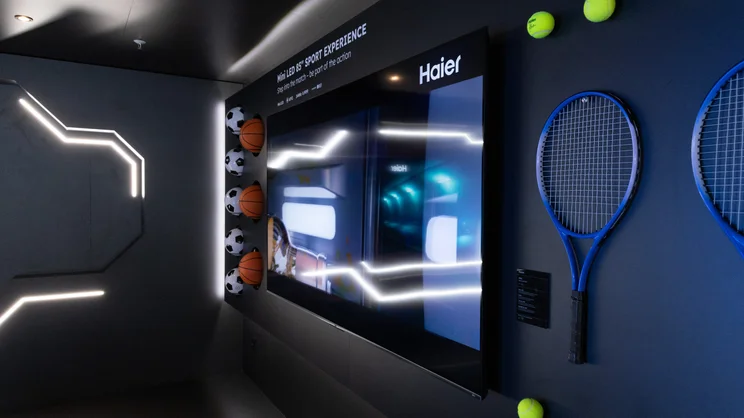
The 85in mini LED, meanwhile, has a 144Hz refresh rate and was listed as supporting VRR – whether that’s the same AMD tech as the QD-mini LED remains to be seen. This is seemingly also one of two TVs with audio hardware provided by speaker manufacturer Kef, which bodes well for avid cinephiles. Behind the scenes sits TCL’s AIPQ technology, which automatically manages image quality using AI. Interestingly, this may also suggest that TCL is providing the panels for these TVs – although that’s just speculation at this stage.
At the bottom of this decidedly luxurious range of TVs sits the 75in mini LED, which was the only TV on the show floor with Dolby Atmos support. This TV also uses Kef audio technology. It was unclear at the time whether this set supports high refresh rates or VRR.
It’s also unclear what HDR formats these TVs support – although I was told that certain models (the 96 range) reach a peak brightness of 2,000 nits. That’s ample for impressive HDR support, assuming the backlight tech is up to the task.
These TVs are slated to arrive in the UK in Q1 2026 – prices are unknown at this stage, but I would assume the majority will fall into the four-figure range.


